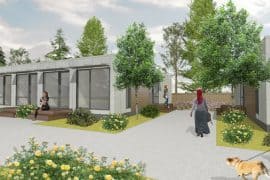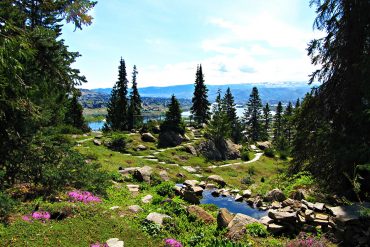Is Sustainability Dead? An Emerging Regenerative Ethic Is taking On More And Staying Net Positive
written by Kevin Max
STAINABILITY IS DEAD.

German philosopher Friedrich Nietzsche led us out of the Age of Enlightenment, with the declaration in his philosophical novel Thus Spoke Zarathustra, “God is dead.” Emerging voices in architecture and design today are trumpeting a new execution—Sustainability is Dead. A nascent movement called “regenerative design” is pushing a higher standard and becoming an ideal that could save the world from itself.
Cork floors? No-VOC paint? Reclaimed barn wood? No longer is the act of doing less environmental harm good enough. As earthlings overseeing global environmental degradation, we may be too far gone for that. Regenerative design demands that each building project actually improve the environment and, perhaps, even boost human well-being, a more elusive goal.
When the concept of sustainable development first surfaced in earnest, it came from a Norwegian woman. In 1987, the Brundtland Commission released its watershed report, Our Common Future, to the United Nations. Led by the former longstanding Norwegian prime minister, Gro Harlem Brundtland, the commission defined sustainable development as that which meets the needs of the present without compromising the needs of future generations. at notion would see minor facelifts over the next generation, but largely stayed intact over the years.
Regenerative development goes beyond this lesser standard of not compromising the needs of future generations. Its goal is the ambitious task of improving the prospects for future generations, making net positive gains. Phaedra Svec is the director of regenerative design at Seattle’s McLennan Design. She grew up in rural Iowa, where her family restored a barren farm plot to health. “It was there that I first understood if you invite life to barren places, it will always show up (a regenerative concept),” Svec said. “We participated with our place, took responsibility for its health, and it allowed us to thrive there (another regenerative concept).”
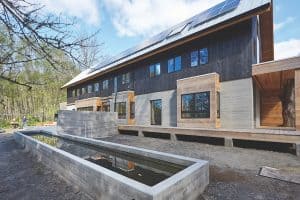
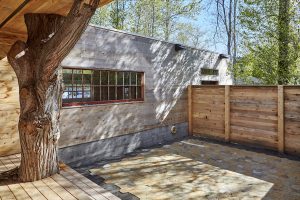
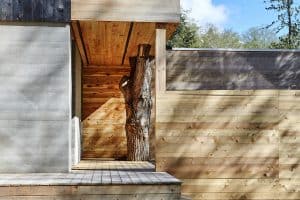
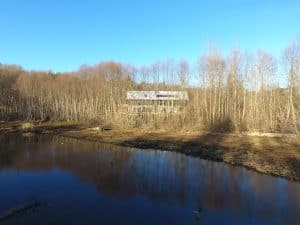
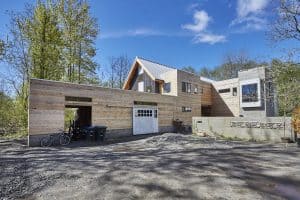
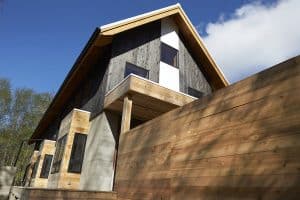
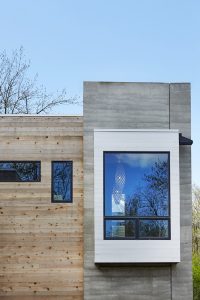
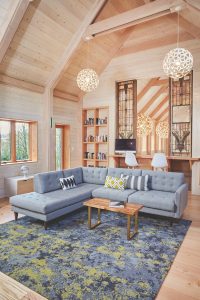
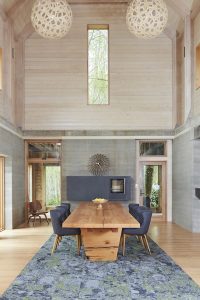
The Brundtland concept of sustainability, Svec said, fails because humans are not good at predicting the needs of future generations. “Sustainability is about surviving, not thriving,” she said. “So, how do we inspire our communities to act in their own best interest and in service to life if they are in survival mode? I believe regenerative design is an approach which heals our community trauma and harnesses the best of our creative energy to allow us to leap, skip and catapult to quality-of-life solutions that restore, repair and invite life to thrive before our very eyes.”
Regenerative design is a comprehensive plan that aspires for positive outcomes across social, economic and ecological systems, rolled together. “Regenerative design is not a style or a building or a thing at all,” according to Svec. Rather, she said, it’s a mindset that asks, “What can we do to make something better, more vital than the state we find it in from the outset?” Foremost among regenerative design’s pieces is human and wildlife well-being. Can it be improved by the act of development? Given the significant amount of time people spend indoors today, an ongoing connection to nature is crucial for ongoing health in a regenerative environment.
Next are the systems involved—from water quality to wastewater management, energy generation and pollution remediation. In a house built under today’s green building ethic, we will find solar arrays for hot water heat, passive solar for light and ambient heat, low-flush toilets to reduce water use and sustainably harvested materials to avert bad forestry practices. We’ve created a nice home for ourselves, but not made the world a net better place for our effort. The regenerative portfolio of options goes beyond these with human experience research, rain capture for complete water use, composting toilets, carbon sequestration, living walls and roofs, and net positive energy production per project.
“Sustainability is about surviving, not thriving. So, how do we inspire our communities to act in their own best interest and in service to life if they are in survival mode? I believe regenerative design is an approach which heals our community trauma and harnesses the best of our creative energy to allow us to leap, skip and catapult to quality-of-life solutions that restore, repair and invite life to thrive before our very eyes.” —Phaedra Svec
Within McLennan’s Design’s portfolio are a number of examples of the state of regenerative projects today. Take, for example, the home of McLennan Design founder Jason McLennan. Heron Hall on Bainbridge Island is a 3,200-square-foot solar-powered building with rammed-earth walls and the area’s first certified composting toilets. This project has earned a Living Building Certification, meaning it has to create more energy than it uses; harvest, use and treat all water it uses, and salvage and re-use materials destined for landfills. The house is a beacon of regenerative design on a small scale. For the new development ethic to succeed, however, the bigger community of municipalities, commercial builders and universities must also be engaged.
Another McLennan project that goes deeper into human well-being is that of the Warriors’ Ascent project, a retreat for active-duty military, veterans and first responders who suffer from post-traumatic stress disorder. Through design and holistic medicine, this prospective healing center on 116 acres in Kansas City, Missouri, intermingles research, design, architecture and nature in a program that aims to help people strengthen themselves and their ties to family and community.
One test piece from the University of British Columbia brings together many of the elements of regenerative design in a commercial building that houses its Center —Phaedra Svec for Interactive Research on Sustainability (CIRS). A concept led by Dr. John Robinson, then the executive director of the sustainability initiative at UBC, CIRS is the collegiate benchmark for a living laboratory of regenerative design. The concept was born in 1999, when he was talking to colleagues at the institute, recalled Robinson, now presidential adviser on the environment, climate change and sustainability at University of Toronto. “We talked about doing all of this research but not putting it into practice. So we said, ‘Why don’t we build a building at the frontier of sustainability? Well, because faculty don’t build buildings.’” Robinson and his colleagues, nonetheless, raised about $25 million before the university contributed its first dollar, Robinson said.
This project would be designed to move beyond net-zero energy use to net-positive energy creation and the more nebulous net-positive human health. “It was always inevitable that it would happen—it was just a small circle who knew that at the start,” Robinson said with a laugh. “It just wasn’t exciting enough to be net zero. We were trying to create something that was net positive.” the group of architects, designers, engineers and sustainability practitioners threw everything on the table and researched and analyzed each aspect of the building—from water reclamation to human behavior. “We ended up with ten goals and 150 strategies,” Robinson said. “We all agreed that the basic principles were three—this had to be smart [cost-conscious], green [net positive] and humane.” the four-story, 61,000-square-foot frame of the CIRS building is largely composed of Canadian timber, including from Western Beetle-infested stands. The building’s water demand is offset by captured rainwater.
CIRS can purify up to 2,300 liters of water per day and accounts for 600 tons of sequestered carbon. Its 275-megawatt solar array supplies excess power. (For measure, one megawatt can power more than 500 residential homes for a year.) Robinson noted that while many of the building’s objectives were met, it fell short in two categories— water quality and energy production goals. Nonetheless, CIRS is a living laboratory where theses are tested and rejected or embraced for future development. The result is a tome of research and practice from which tomorrow’s regenerative leaders will emerge at the university. “From a living lab point of view, we learned a ton that we now use in different projects,” Robinson said.
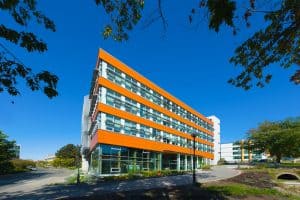
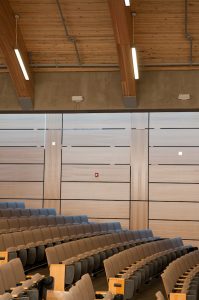
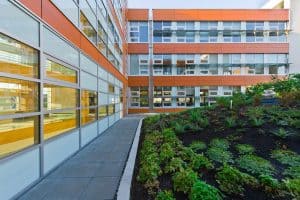
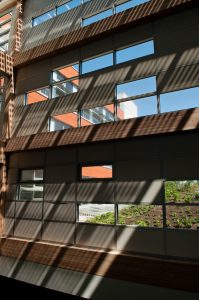
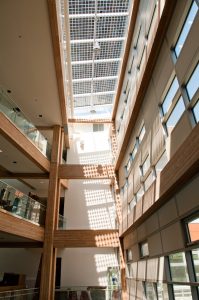
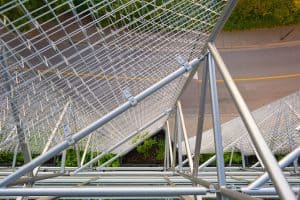
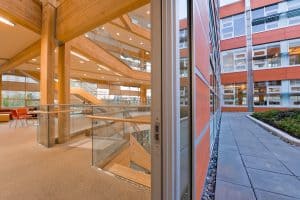
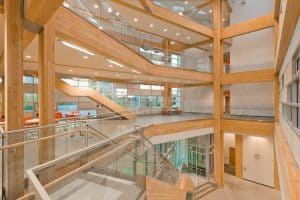

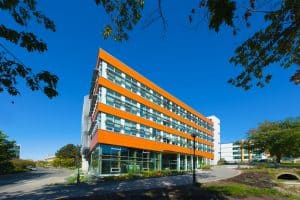
Why is the regenerative movement getting its legs now? One argument is that climate change is making us all lobsters in a pot whose temperature (and urgency) is slowly rising. We are increasingly witnessing the effects of environmental degradation and global warming. NASA and NOAA reported that seventeen of the eighteen warmest years in the 136- year history of that recorded data have all occurred since 2001, with the exception of 1998.
Sustaining this is equivalent to locking in heightened greenhouse gas levels and long-term failure. It’s also no coincidence that a New York Times bestseller in 2017 was Drawdown: The Most Comprehensive Plan Ever Proposed to Reverse Global Warming. This book, edited by environmentalist Paul Hawken, examines 100 ways we can reverse manmade greenhouse gas levels and restore the natural order of things. While success is a piecemeal story in this movement, ultimately its edge shave to overlap global boundaries in one defense shield.
In South Africa at University of Pretoria’s department of agriculture, Professor Chrisna du Plessis is seeding regenerative sustainability. She got involved in this eld because she was an optimist with a good imagination. “I could see the world was taking a direction that would lead us off an evolutionary cliff if we did not dramatically change our values and practices,” du Plessis said. “And watching the global ‘us’ continue to hurtle down this path at a growing pace certainly leads to moments of existential despair. However, I chose to do something about it in whatever way I could, so you could say I chose the path of hope.” In the late 1990s, du Plessis began writing articles, speaking at conferences and producing books on the subject.
In her latest book, Designing for Hope: Pathways to Regenerative Sustainability, du Plessis offers a hopeful perspective that uses science and optimism to refute doom-sayers. “It is true that the longer we stay on the current path, the fewer the available options that would lead to a positive outcome,” du Plessis noted. “But as thinkers like Paul Hawken, [Belgian technologist] Michel Bauwens and [self-described ‘de-growth activist’] Charles Eisenstein point out—we have everything we need to choose a different path. What is holding us back is our fear of change, our own path dependency.” Regenerative sustainability is a lofty goal, but is it achievable? “I think it is,” Robinson said. “I think it’s happening now.”




